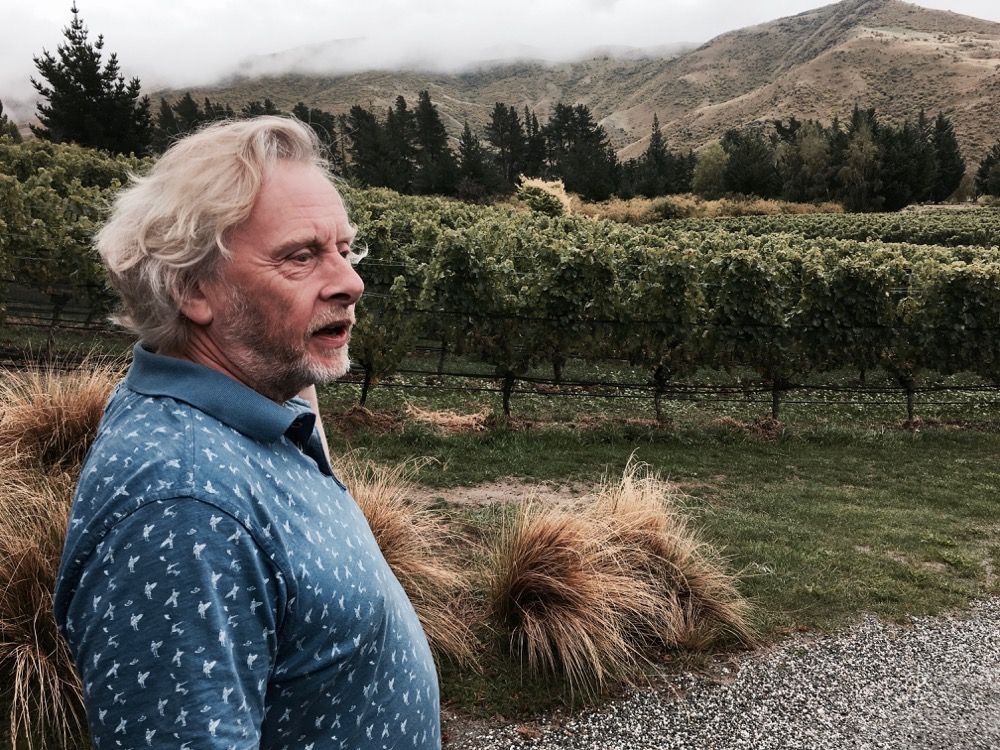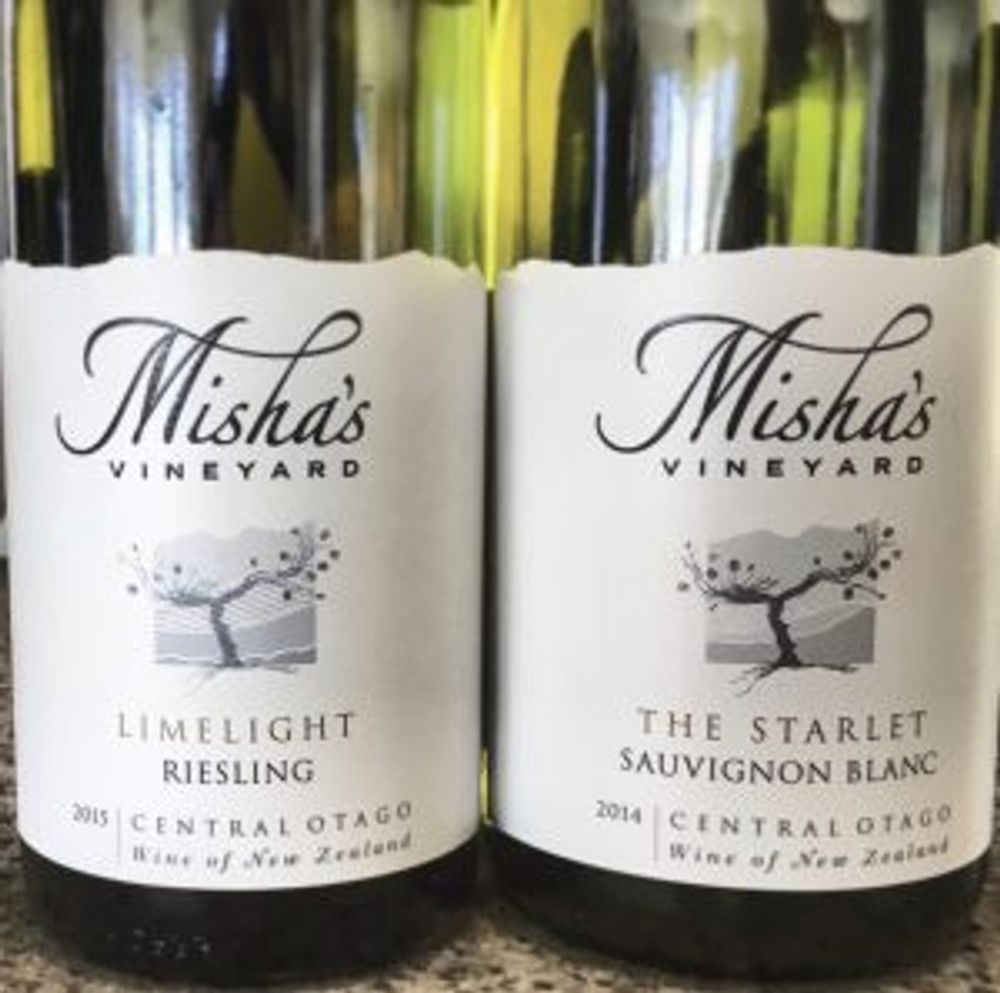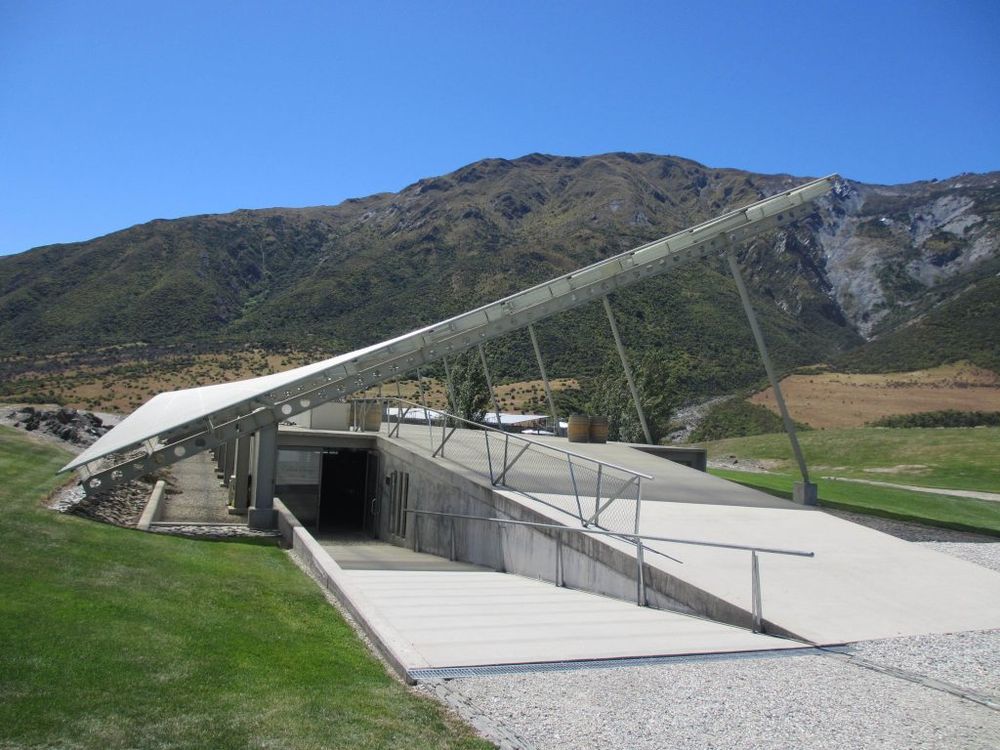Sauvignon Blanc is what has made New Zealand famous around the world, but will it be the variety to take it forward for the next 20 to 30 years?
No wine-producing country is dominated by one style of wine as New Zealand. Sauvignon Blanc accounts for 67% of plantings and retains an extraordinary popularity around the world – 85% of exports are of Sauvignon Blanc. In a young, restless country that is always searching for something new, producers have looked to replicate the Sauvignon Blanc boom with other grape varieties.
Such phenomenal success clearly cannot be repeated, but New Zealand is beginning to prove there is more to its white wine than grassy, pungent Sauvignon – although deciding which varieties to concentrate on is a topic of relentless conversation.

Nigel Greening of Felton Road believes Chardonnay could still have a big future in New Zealand
In the last 15 years, production in New Zealand has risen fivefold, concentrating on Sauvignon Blanc, which had 3,600 hectares planted in 2002 and now has 20,000. In contrast, plantings of Chardonnay have stalled: 3,427ha in 2002 and now 3,211. Why? New Zealand’s wine industry boom came during “the triumph of the ABC era,” says Nigel Greening of Felton Road in Central Otago. He believes that too many producers “chased fashion,” overlooking Chardonnay in favour of Sauvignon Blanc and Pinot Gris.
Still time for Chardonnay?
Both Greening and Michael Brajkovich of Kumeu River Wines, north of Auckland, have no doubt that Chardonnay produces New Zealand’s greatest white wines. Brajkovich told The Buyer: “Chardonnay is clearly the best white variety that we [New Zealand] make.”
The wines reflect the different climates of New Zealand, giving a greater sense of regionality than any other variety: while full and rich in Hawkes Bay, the warmest wine region, they are fresh and lean in Central Otago, the coolest.
New styles of Sauvignon
The discussion surrounding the potential of Chardonnay and other white grape varieties in New Zealand comes at a time when consumers’ infatuation with Sauvignon Blanc – or at least the more obvious, fruity style – seems to be waning.

“People are looking for an alternative to Marlborough,” says Misha Wilkinson of Misha’s Vineyard in Central Otago, a region well-known for Pinot Noir production but which is surprisingly turning out very interesting examples of New Zealand’s flagship white variety. A number of producers, including Wilkinson, make more restrained, “food-friendly” versions of Sauvignon Blanc that “don’t have the assault on the senses that Marlborough does” to meet the current demands of consumers and restaurants.
“If you’re a somm,” Wilkinson continues, “you’re looking for something different on the wine list.”
As other regions are coming out with new styles of the popular New Zealand variety, Marlborough is also rising to the challenge, with producers experimenting with lees stirring and indigenous yeasts.
Brajkovich agrees that New Zealanders are open to different styles of wines: “People taste more, they become more educated, and move on from Sauvignon Blanc to more interesting varieties.”
Opportunities for Pinot Gris
A prominent trend of the last 20 years has been Pinot Gris, which producers across the country focused on as the next Sauvignon. It’s an aromatic grape, comfortably familiar to Sauvignon lovers, but fuller-bodied. In 2002, just 232ha of Pinot Gris were planted; now there are nearly 2,500.
Wilkinson has had particular success with Pinot Gris: “We can’t make enough of it, it’s all on allocation. Restaurants vie to get the Pinot Gris as their premier by-the-glass listing.” She adds: “There are bad examples of Pinot Gris, but Central Otago does it well because of the acidity. It achieves great ripeness while maintaining that tightness on the palate.”
Despite its potential, Pinot Gris has faced its share of difficulties. Kumeu River makes two different Pinot Gris and Brajkovich acknowledges the challenges that producers face with the naturally tannic grape. To balance the tannins, some winemakers concentrated on full-bodied, sweet styles that were often too flabby. “We’re now seeing examples that are not as sweet and alcoholic,” says Brajkovich.
The development of Pinot Gris is also part of a more restaurant-based culture: “Crisper, more food friendly style is now the way moving forward,” he adds.
Small scale Riesling

Peregrine Wines see great opportunities for Riesling to shine but worry about consumer demand
On a much smaller scale, with under 800ha of plantings across New Zealand, some producers are focusing on Riesling for quality, aromatic white wine. Nigel Jennings is adamant that the region can produce world-class Riesling due to its cool continental climate and rocky schist soils: “This region has the gift that it can make Mosel-status Rieslings – it’s a unique opportunity.”
Wilkinson is similarly convinced by the comparison with Mosel: “One variety that is defining of Central Otago in terms of white wine is Riesling.”
Nadine Cross of Peregrine Wines, another Central Otago Riesling producer, admits that their enthusiasm for the variety is qualified by its lack of appeal to consumers: “Great Rieslings are being made in the region, but there is no demand for it.”
New Zealand is at a decisive turning point in its young winemaking history. As phylloxera slowly spreads (the rapid expansion of the industry meant that many vines were planted ungrafted due to the limited availability of rootstock), there is pressure to replant and decide on the most suitable varieties for the sites. Producers now see the quality and market potential of Chardonnay but having declined to plant it 15 to 20 years ago, they have to decide whether to start again and plant it now.
The New Zealand wine industry is young and always open to the new, but, with limited room for further expansion, it needs to think about how it wants to develop over the next twenty years and whether the future is Chardonnay or its aromatic white varieties.
































